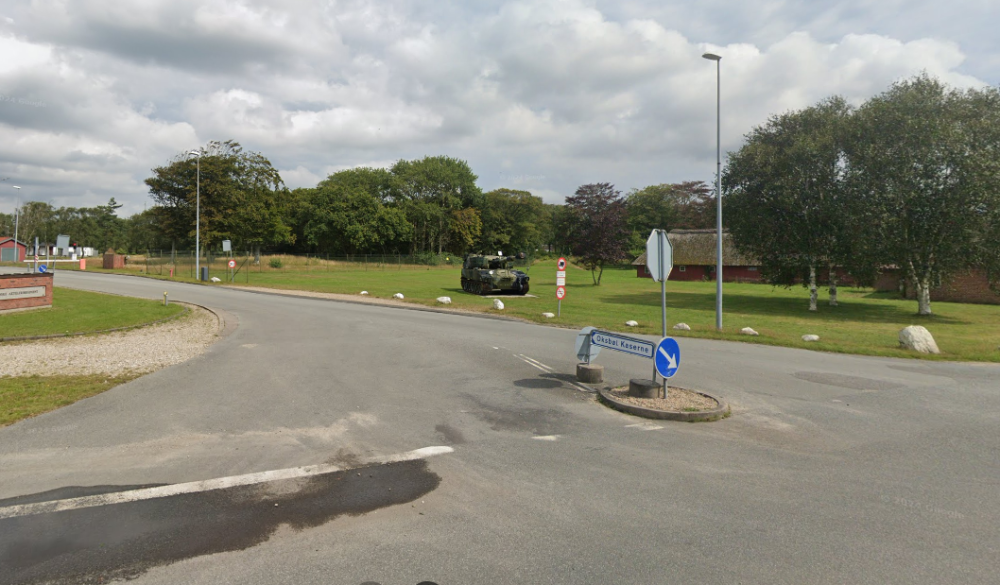Oksbøl Barracks
Oksbøl Barracks is one of Denmark's most important military bases, located in Oksbøl, in the province of Southwest Jutland. It plays a crucial role in the Danish Armed Forces and has a rich history dating back to the Second World War. The barracks and the surrounding military area are often associated with the training of Danish soldiers, both in national and international operations.
What makes Oksbøl Barracks special?
Historical significance:
Oksbøl Barracks was originally established in 1937 and has since played a significant role in Danish military history. During World War II, the barracks served as a key location for the German occupation forces.
After the war, the barracks were rebuilt and returned to service by the Danish Armed Forces. Since then, it has been one of Denmark's most important military training facilities.
Present and NATO:
Oksbøl Barracks is a strategic location for the Danish Army and is frequently used for training Danish soldiers, as well as for NATO exercises. It is a key location for the Danish Armed Forces Training Center (DAFTC).
Various military training and exercises are held at the barracks, such as artillery training, tank training, and large-scale joint military operations.
The barracks offer facilities for various specialized units, including airmobile units, artillery, tanks, and reconnaissance groups.
Training and Simulations:
The barracks has extensive training facilities, including military training fields, firing ranges, and tank tracks. The military simulators and the DAFTC are crucial for preparing Danish and NATO soldiers for real-world combat situations.
International joint exercises are regularly held, where Danish and foreign troops train together in various scenarios. These exercises help the troops learn to work in multinational coalitions and under extreme conditions.
Oksbøl as a refugee reception center:
An interesting aspect of Oksbøl Barracks is that it also served as a refugee reception center in the years following World War II. Between 1945 and 1949, the barracks housed thousands of refugees who had fled to Denmark from Germany and other countries.
This is an important historical point, as Oksbøl served as one of the largest refugee camps in Denmark. Many of the people housed here were soldiers and civilians who had fled Germany and been displaced by the war.
The Armored and Artillery Museum:
Oksbøl Barracks is located near the Armored and Artillery Museum, which further highlights the region's military history. This museum offers an extensive collection of tanks and other military equipment, making it a perfect complement to the barracks' military training facilities.
Refugee memory:
The museum and the barracks' historical sections also commemorate the barracks' time as a refugee camp. Information is available about the reception of thousands of refugees who sought refuge after the war.
The importance of Oksbøl Barracks today
Support for NATO operations: Oksbøl plays a key role in cooperation with NATO countries and regularly hosts major joint exercises.
Training of Danish troops: In addition to NATO exercises, the barracks are also used extensively for training the Danish armed forces, highlighting the facility's enduring strategic value.
Historical significance: The barracks have deep historical significance, from its time during World War II to its role as a refugee reception center. This makes it not only an important military location but also a place where Danish history can be relived.
Do you have more information about this location? Inform us!
Source
- Text: RJArmy.nl
- Photos: RJArmy.nl
Nearby
Museum
- FLUGT – Refugee Museum of Denmark - Oksbøl
- The Armoured and Artillery Museum in Oksbøl - Oksbøl
- Museum Tirpitz-Position - Blåvand
Point of interest
Monument
Cemetery
- Commonwealth War Grave Mosevraa Churchyard - Mosevrå
- German War Cemetery Oksbøl - Oksbøl
- Commonwealth War Graves Oksby Churchyard - Blåvand Oksby




